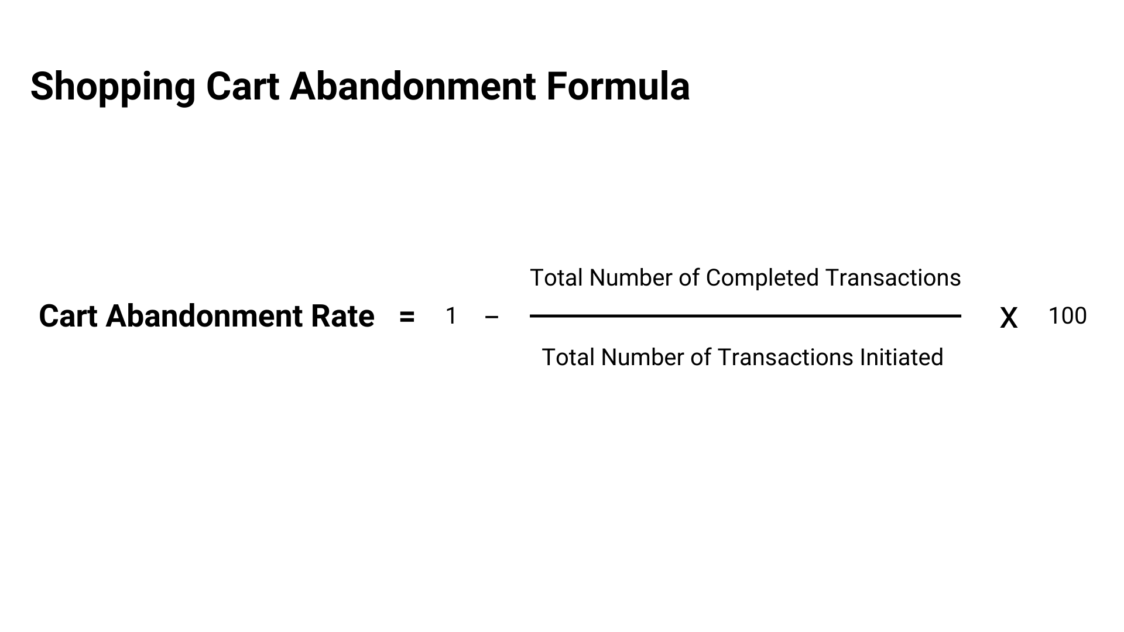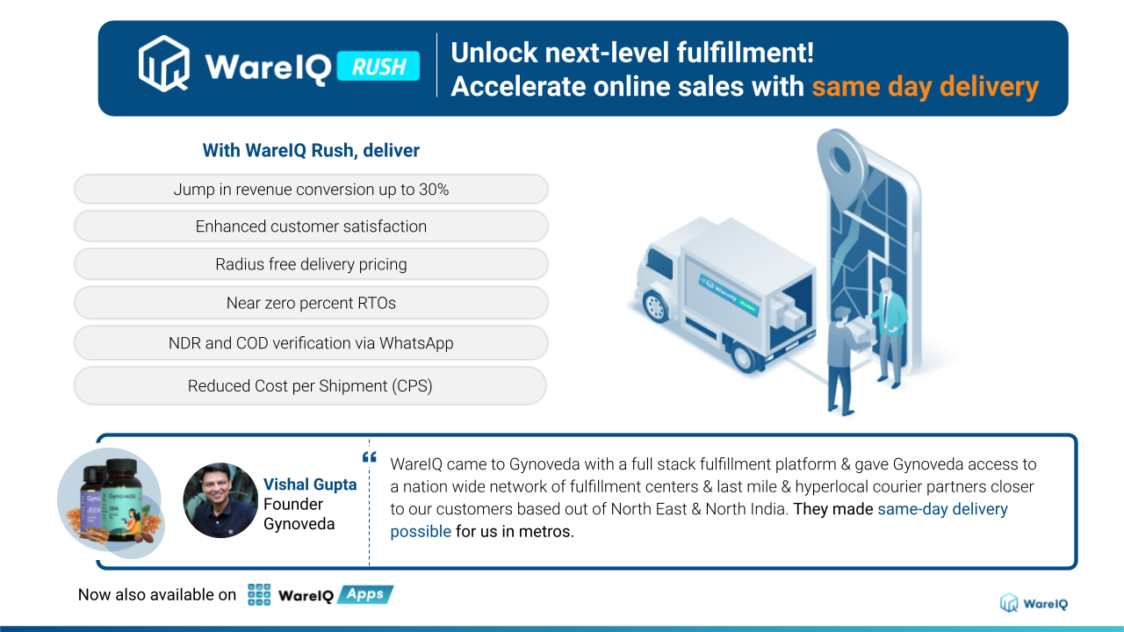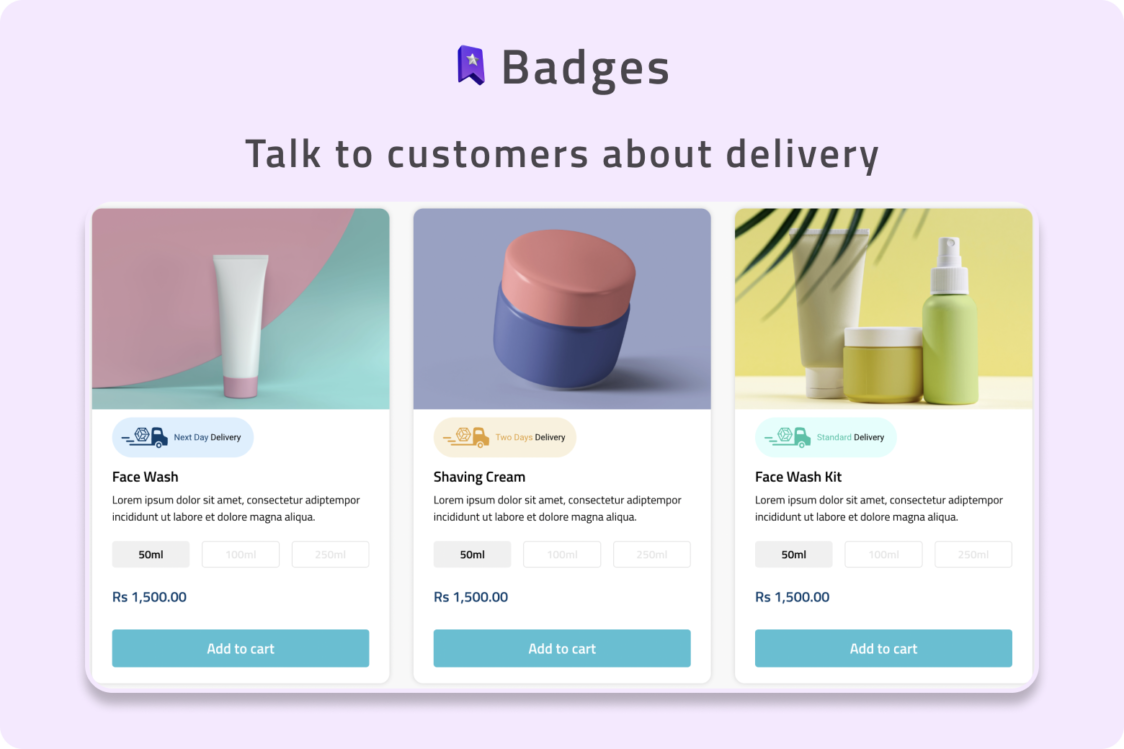What is Shopping Cart Abandonment? Top 10 Strategies for Reducing Cart Abandonment Rates in 2024

The most disappointing thing that a seller can experience is when a buyer shows genuine interest but doesn’t end up purchasing anything. It reflects a loss of all the resources and time that is dedicated by the business. Shopping cart and checkout abandonment are all too prevalent among online buyers in the modern eCommerce space. Data shows that the current average shopping cart abandonment rate is more than 70% in India, which is severely eroding retail revenues.
As a result, many retailers have made reducing shopping cart abandonment a top priority and are investing increasing amounts of money in doing so. Fortunately, there are a number of approaches and personalization techniques that aid in abandoned cart recovery and boost returns. Let us look at it in detail.
- What is Shopping Cart Abandonment?
- How to Calculate Shopping Cart Abandonment?
- The 3 Stages of Shopping Cart Abandonment
- Top 10 Causes of Shopping Cart Abandonment in 2024
- 10 Best Strategies to Reduce Shopping Cart Abandonment in eCommerce
- Provide Ultra-Fast Delivery
- Offer a Mobile-Friendly Experience
- Have a Simple Check-Out Process
- Reduce Any Uncertainties
- Provide Transparent Pricing
- Undercut Your Competitors
- Implement a Fair Returns Policy
- Offer Customization Options
- Have Multiple Payment Methods
- Send Emails to Customers Who Showed Interest
- Provide Assurances on Listings
- Conclusion: How Can WareIQ Help to Reduce Shopping Cart Abandonment?
- Shopping Cart Abandonment: FAQs
What is Shopping Cart Abandonment?
Shopping cart abandonment happens when a potential consumer begins the online check-out procedure for an order but leaves before making a purchase. A commodity that is added to the shopping cart but never purchased is regarded as having been “abandoned” by the customer.
In simple terms, it is the same as a customer going to a store to buy products, choosing which ones they want and are about to have them scanned, but suddenly decided against it. In a real-world scenario, a shop attendant can inquire if there are any issues and recommend them better and cheaper products.
WareIQ, an eCommerce fulfillment company, empowers online brands with a superior-tech platform to compete with Amazon like service levels by bringing their average delivery timelines from 5-10 days to 1-2 days.
How to Calculate Shopping Cart Abandonment?
To calculate cart abandonment rate, you need to divide the total number of completed transactions by the total number of created carts. Subtract from one and then multiply by 100.
The formula is as follows:

The total number of transactions initiated.
This will show you your rate of shopping cart abandonment over a given time frame. For instance, you can take into account all of the transactions from the previous month or quarter and split them by the number of completed transactions or the goods that customers added to their carts but did not end up purchasing.
For example, if you have a total of 500 carts created and 120 completed purchases, the cart abandonment rate is 76%.
The 3 Stages of Shopping Cart Abandonment
Pre-Abandonment
It might be challenging to determine visitor intent during the pre-check-out stage because they might simply be browsing your website without making a purchase decision. In some cases, factors contributing to their final abandonment may be related to the user experience.
No one will purchase from your website if it appears to be shady or fraudulent. A reliable website can influence users’ behaviour significantly by lowering hesitations and fears. The usability of a website that is simple, transparent and convenient can frequently convert a potential buyer into a loyal customer.
Both internal and external aspects of the eCommerce experience, including security seals, shipping procedures, customer testimonials and more, may have an impact on the trustworthiness of your business, as determined by customers.
Buyers need to feel secure when making purchases from a website. Broken links, poor image quality, inaccessible sites and site timeouts can make visitors lose faith in your company and their ability to make wise purchases.
Three efficient strategies to encourage trust in your business and develop confidence in your site include displaying well-known verification seals and logos, making customer product reviews easily accessible and providing complete disclosure on security standards.
According to a study, unanticipated expenses, like expensive delivery fees or additional prices, are the main reasons for cart abandonment. Preventing customer frustrations and significantly lowering pre-abandonment dropouts can be accomplished by streamlining the checkout process and offering upfront prices, clear payment options and transparent delivery charges.
Display of Abandonment Intent
The warning for impending cart abandonment is set off by a number of the buyer’s telling behaviours and intent signals. There are efficient personalization and abandoned cart recovery options that let you recuperate in real-time and convert those potential abandonments into sales.
Customers could feel confused when websites have an excessive amount of content. When buyers lose interest and indicate that they are ready to go, eCommerce companies can deliver personalized and incredibly compelling messages to them.
Powerful ways to keep visitors engaged before they go back to their referral source include triggering an incentive-laden overlay with limited-time offers, free shipping, money-back guarantees or an inducement to subscribe to a newsletter upon display of this behaviour.
For instance, assume that your user has chosen to quit your website rather than completing the checkout after being confronted with unexpected shipping expenses. By automatically launching an exit-intent overlay or message with a tailored incentive for finishing the order when you notice your visitor’s exit intent, you can successfully re-engage with them.
Employing flashing tab notifications that change the title of the abandoned browser’s tab to attract the user’s attention and persuade them to purchase if they already have items in their cart is another strategy that is simple but effective in reducing shopping cart abandonment.
Post-Abandonment
To get your customers to return, resulting in abandoned cart recovery, there are a variety of retargeting tactics and technologies you may use. For instance, businesses can use targeted display advertising to retarget cart abandoners, reminding them that they still have products in their carts and providing them with special offers when they come back to finish their purchases. When a user visits a website, browsing cookies are used to retarget them with highly relevant advertisements for things they have already shown interest in.
eCommerce businesses can create customized abandonment email campaigns to remind customers to finish their shopping or to provide discounts when out-of-stock items have been restocked. While requesting input from customers might assist in identifying the issues that contributed to shopping cart abandonment, providing personalized marketing messages is an incredibly successful method to encourage returns.
Sending out surveys to your visitors and clients regularly will help you remain on top of their expectations and will provide you with information on the most pertinent and efficient marketing methods to use to decrease future abandonments.
Abandoned cart recovery strategies can be quite successful in re-engaging customers at all stages of the cart abandonment process. Customers’ demands are rising, and eCommerce merchants in charge of omnichannel shopping should adopt creative new approaches to address their needs on a personal level, throughout the customer journey.
Top 10 Causes of Shopping Cart Abandonment in 2024
Unintuitive Checkout Process
The buyers should reach the finish line as soon and as easily as possible. A lengthy checkout process with numerous steps and forms might cause friction and slow down your customers. As a result, the buyer not only detracts from the present checkout experience but may never make another purchase on your website.
Unforeseen Shipping Expenses
Unanticipated delivery expenses typically hit a customer after they’ve entered their shipping information and discover that it is more costly than they anticipated. Once they notice those fees, customers might reconsider their purchase and, if their expectations aren’t satisfied, they might even abandon their cart.
Forced Account Setup
Prior to making a purchase, users should not be required to register an account. This is especially true for new customers who might not be prepared to open an account. The checkout experience is complicated and order completion is slowed down when customers need to generate a username and password in order to finish a transaction.
Payment Safety Concerns
Understandably, most buyers are extremely wary of making purchases online. They won’t complete their purchase if they don’t feel secure about giving their personal information or if they worry that their payment information won’t be handled securely.
Shopping Cart Restrictions
Customers don’t want to add things to their cart only to discover later that they are unable to purchase them due to limitations on the amount that one person can buy. Being forthright about quantity restrictions helps reduce consumer resentment by establishing expectations that a product may have restricted availability.
Better Deals Elsewhere
Customers now have access to a wide range of options when purchasing online and can compare those options quickly, thanks to the wonders of the internet and the growth of mobile commerce. Deal-seeking customers frequently place items in their carts with the intention of buying them later from a different store that is offering a better deal.
Lack of Variety in Payment Options
Online buyers prefer to finish their transactions with the payment options that are most practical for them. Some customers may be content with the default selection but others may decide to quit your site entirely if you don’t accept their chosen payment method, whether it’s card payment, UPI payment or the purchase now, pay later option.
Rigid Returns Policy
After adding items to their cart, customers frequently receive information about warranties and return policies. A vague or insufficient return policy may make customers think twice about their purchase. Customers want to know that they can simply return a product to a shop and get a refund if anything goes wrong with it.
Long Delivery Timelines
Customers expect to receive their order as soon as possible. The advantage of shopping online over visiting a store is lessened if consumers must wait too long. Instead of waiting for your store to ship, a consumer who needs their purchase by a certain date might decide to search elsewhere.
Glitches in Website Performance
A glitchy or unsteady eCommerce site may make customers lose faith in your checkout process or simply become irritated and leave. In the event of an unexpected crash or lengthy page load, customers are less likely to provide their payment information for fear of being charged twice for the purchase or having their payment fail.
10 Best Strategies to Reduce Shopping Cart Abandonment in eCommerce
Provide Ultra-Fast Delivery
The online shopping space is expanding and enhancing the delivery process to fulfill orders as soon as possible has become very important. Same-day and next-day delivery has become the new standard USP provided by sellers. In many cases, some sellers, with the help of a third-party fulfillment company, can deliver an item within a few hours. This has a positive impact on customers’ buying experience and reduces shopping cart abandonment rates.
Offer a Mobile-Friendly Experience
A streamlined, appealing mobile interface of a website is essential to boosting online sales because younger consumers are increasingly using their mobile phones for shopping. When combined with typical distractions such as calls, messages, social media, etc. an unorganized and unfriendly user experience will increase the rate of cart abandonment.
Mobile-friendly websites are fantastic due to their responsiveness and optimization. However, developing a mobile app for both Android and iOS would be the greatest method to appeal to millennials, as no website can match a native app in terms of usability and navigation.
Some of the top merchants in the world like Amazon, Flipkart, Mesho and others, have repeatedly demonstrated this.
Have a Simple Check-Out Process
Customers tend to favour eCommerce websites with simpler checkout processes because there are now more options available to them than ever before. They will immediately leave to locate a website with a simpler interface if they see a lot of pop-up windows or they need to confirm an action more than once.
If customers find a website with a good user interface, that brand will easily win them over. Customers dislike filling out registration forms, verifying their phone numbers and email addresses, and entering their billing and payment information.
Allowing customers to register using their social network accounts would be a more appealing method to accomplish this. Simple measures like these can greatly increase abandoned cart recovery.
The shopping cart must have a clean appearance and show the products clearly. The price breakdown in terms of cost, shipping and taxes, as well as information on the return/exchange policy and delivery, must all be prominently shown on the page.
By enabling one-click ordering, other eCommerce companies can learn from Amazon. Another example is Mesho, which has recently introduced a new feature that enables prospective buyers to click on a picture of an outfit they like and make a straight purchase through the app rather than going to the retailer’s website.
Reduce Any Uncertainties
The discrepancy between the actual goods and their online description or product image is among the most common complaints about internet purchasing. Realistic product imagery, snappy, in-depth product descriptions and product films that portray the item more accurately and highlight its features can all help to lessen this.
When describing something, it is important to be as truthful and accurate as possible. In a time when consumers seek credibility above all else, images that have been heavily modified are considered unacceptable. Conversion rates can be greatly increased by using images of the use case of the product.
Provide Transparent Pricing
Most websites display a starting price in their ads or even on the product description page, then raise it when you add items to your cart. This makes customers wary of unexpected price increases. Making sure that all costs, including shipping costs and taxes, are expressly listed on the product description page, is the simplest technique to reduce shopping cart abandonment.
This prevents customers from leaving the checkout page after noticing an increase in the overall price. One thing that websites can do is include tax in the cost of the goods and, if applicable, state the threshold for free shipping and delivery on the home page or product page.
Undercut Your Competitors
When a buyer lands on your website and starts shopping, they might abandon their cart because of price comparison with your competitors. You lose the deal and the customer for further sales, so you need to check competitor costs and price your product in a similar vicinity or even below it.
Additionally, a website can reassure users of this by providing details regarding discounts, customer feedback and reviews for each product page which may add value to the product if the pricing is high in comparison to competitors.
Implement a Fair Returns Policy
eCommerce’s ability to offer a doorstep return/exchange facility is one of its biggest advantages. To reassure customers, an effective policy backing this needs to be prominently shown on the checkout page. Free returns enable customers to make purchases without hesitation or concern.
Offer Customization Options
Many times, buyers choose a seller because of the colour and size of the product, fast delivery, favourable payment options, etc. They seek the easiest possible transactions and the best customer experience. So you should offer customization options to increase the rate of cart abandonment recovery and finally earn their money.
Have Multiple Payment Methods
Retailers must provide numerous payment gateways, including region-specific payment alternatives, as well as the choice to remember customers’ payment information and preferences. Additionally, new payment providers could provide promotional offers and cashback plans to entice customers to finish their transactions.
Send Emails to Customers Who Showed Interest
Staying in touch with customers who have shown interest in your brand and your products can increase their chances of returning to your company and making a purchase. It pays to have a form where users can record their contact details before check-out so if you notice that a customer has abandoned their cart, a personalised email can be sent inquiring about the reason for their sudden abandonment and can suggest similar products or offer a solution.
Provide Assurances on Listings
Assurances such as a money-back guarantee in case a product is returned or shipping badges that specify the exact delivery speed will reassure customers that they are dealing with a professional company. This will reduce the chances of them suddenly abandoning their cart because they are apprehensive about the company. Additionally, it will give them more clarity on when they can expect to receive the order and anything else that you wish to convey.
Conclusion: How Can WareIQ Help to Reduce Shopping Cart Abandonment?
To reduce shopping cart abandonment, you should primarily start by measuring and analyzing shopping cart abandonment KPIs in order to figure out where you are going wrong and increase sales and the rate of repeat customers with the help of various technology and experts. Differentiating between cart abandonment and checkout abandonment has proven to be successful for many retailers.

WareIQ, one of the country’s most trusted third-party fulfillment companies, provides a whole range of eCommerce fulfillment services from storage to delivery and everything in between. We assist retailers with reducing their shopping cart abandonment rates by providing super fast delivery services like same-day and next-day delivery through our WareIQ Rush product. This assures customers that they will not have to wait for multiple days to receive their products and can encourage them to make the purchase after they have added products to the shopping cart. Additionally, you can display custom shipping badges on your product pages to convey faster delivery timelines, which provides assurance to them they will receive their products within 1-2 days of placing the online order.









